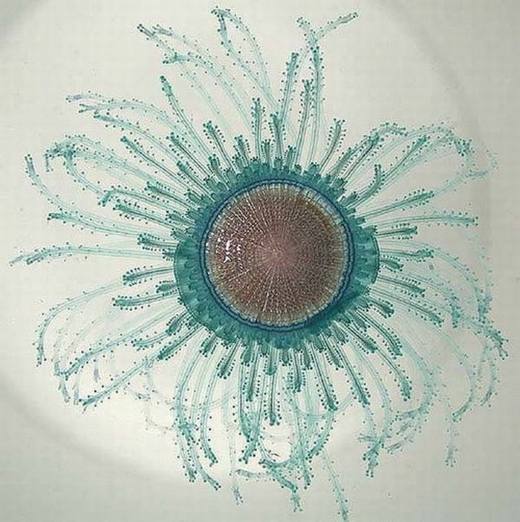Porpita or blue botton
A small floating animal that look similar to a jellyfish, but is in fact a colony of hydrozoan polyps. It can be found in tropic waters ,were it mainly feeds on copepods and crustacean larvae.

A blue bottom is about 2 centimers long and flat : its has a central single mouth or anus for feeding on prey like krill. The strands that radiate from the body has many branchlets, each of which ends in knobs of stinging cells called nematocysts. The nematocyts inflict an irritating feeling to fingers when the blue botton is taken out of the water.

Porpita porpita, commonly known as the blue button, (left) and many velellas (right), an illustration of Brehm. They both belong to the Chondrophore, which is a group of cnidarians that also includes Porpema.

The seaslug Glaucus Atlanticus attacking a Porpita or blue botton. This seaslug feeds on the man of war and Velella velella too. Its is unvulnerable for there sting.
This slug is part of the plankton, as does the violet snail Janthina janthina. This snail is a marine gastropod mollusk that drift on the surface of the ocean, where it is predatious on the hydrozoans
